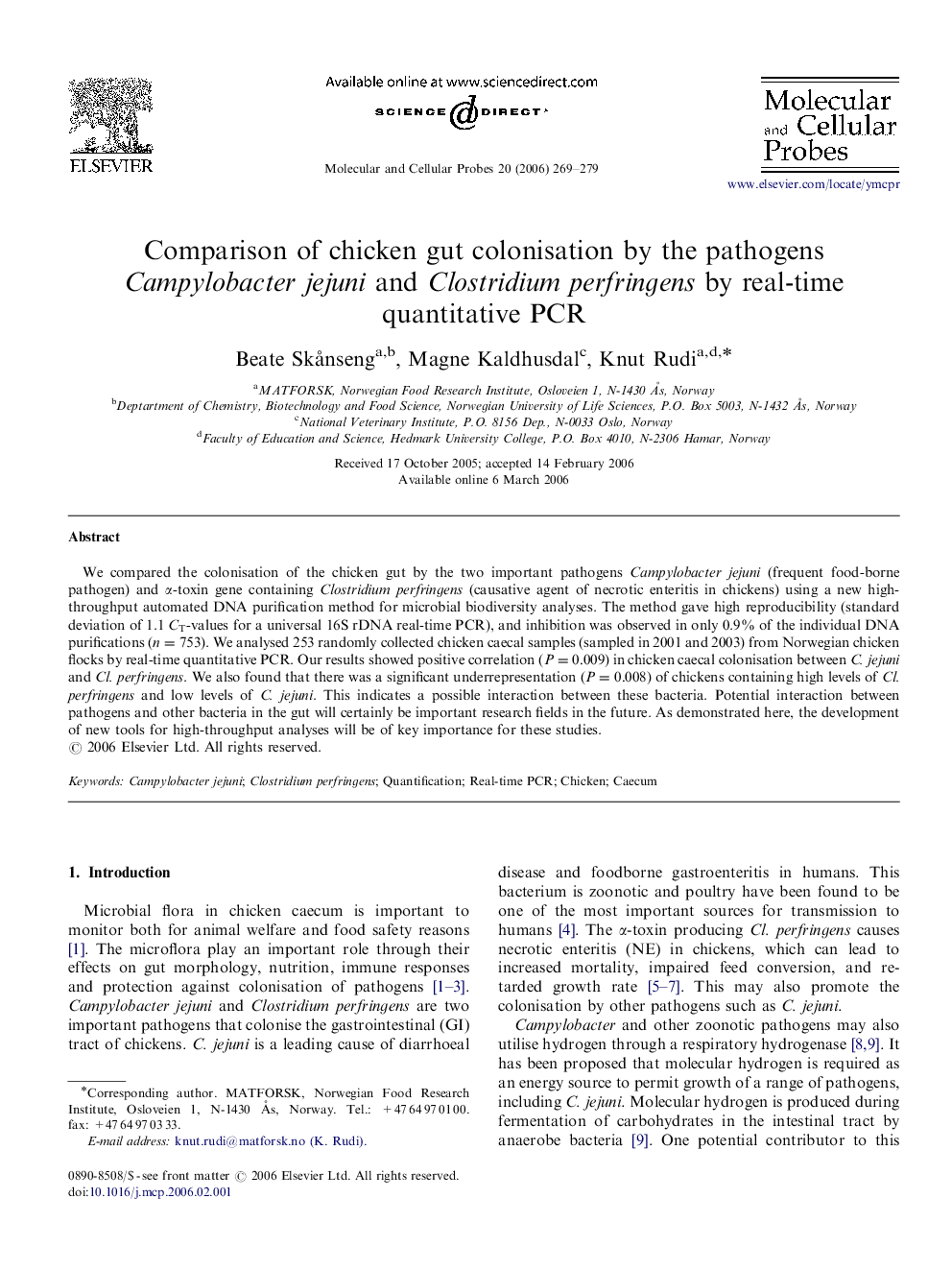| Article ID | Journal | Published Year | Pages | File Type |
|---|---|---|---|---|
| 2200153 | Molecular and Cellular Probes | 2006 | 11 Pages |
We compared the colonisation of the chicken gut by the two important pathogens Campylobacter jejuni (frequent food-borne pathogen) and α-toxin gene containing Clostridium perfringens (causative agent of necrotic enteritis in chickens) using a new high-throughput automated DNA purification method for microbial biodiversity analyses. The method gave high reproducibility (standard deviation of 1.1 CT-values for a universal 16S rDNA real-time PCR), and inhibition was observed in only 0.9% of the individual DNA purifications (n=753n=753). We analysed 253 randomly collected chicken caecal samples (sampled in 2001 and 2003) from Norwegian chicken flocks by real-time quantitative PCR. Our results showed positive correlation (P=0.009P=0.009) in chicken caecal colonisation between C. jejuni and Cl. perfringens . We also found that there was a significant underrepresentation (P=0.008P=0.008) of chickens containing high levels of Cl. perfringens and low levels of C. jejuni. This indicates a possible interaction between these bacteria. Potential interaction between pathogens and other bacteria in the gut will certainly be important research fields in the future. As demonstrated here, the development of new tools for high-throughput analyses will be of key importance for these studies.
